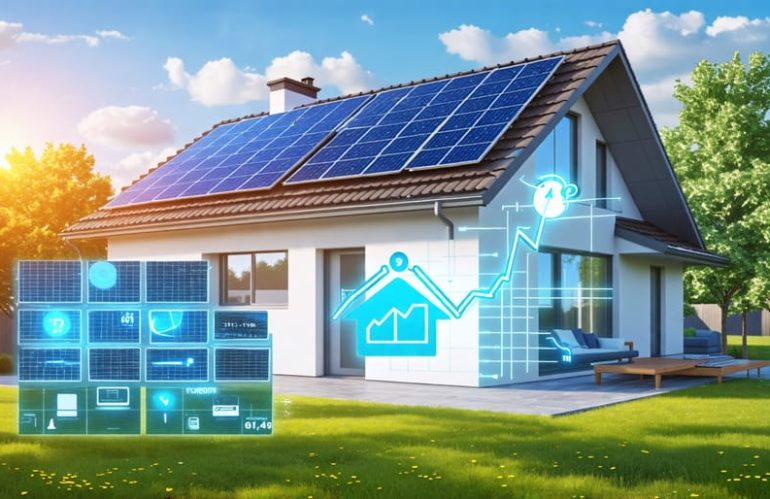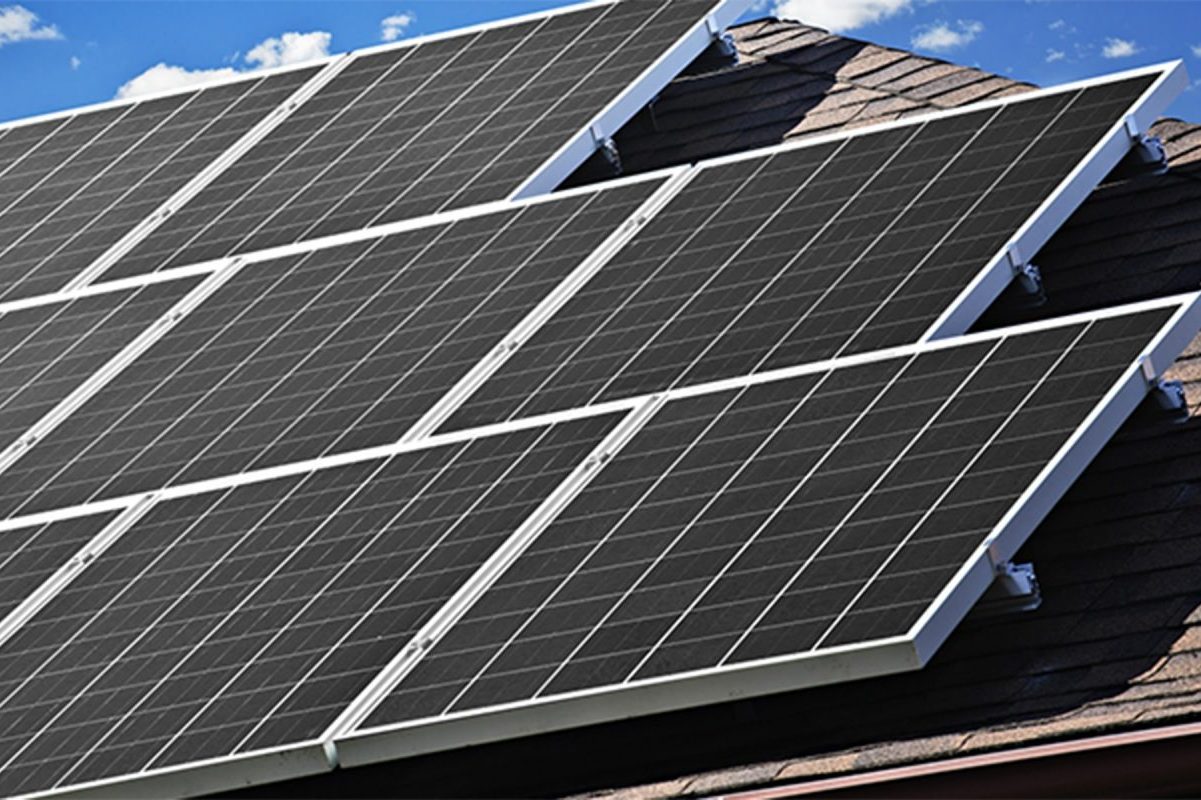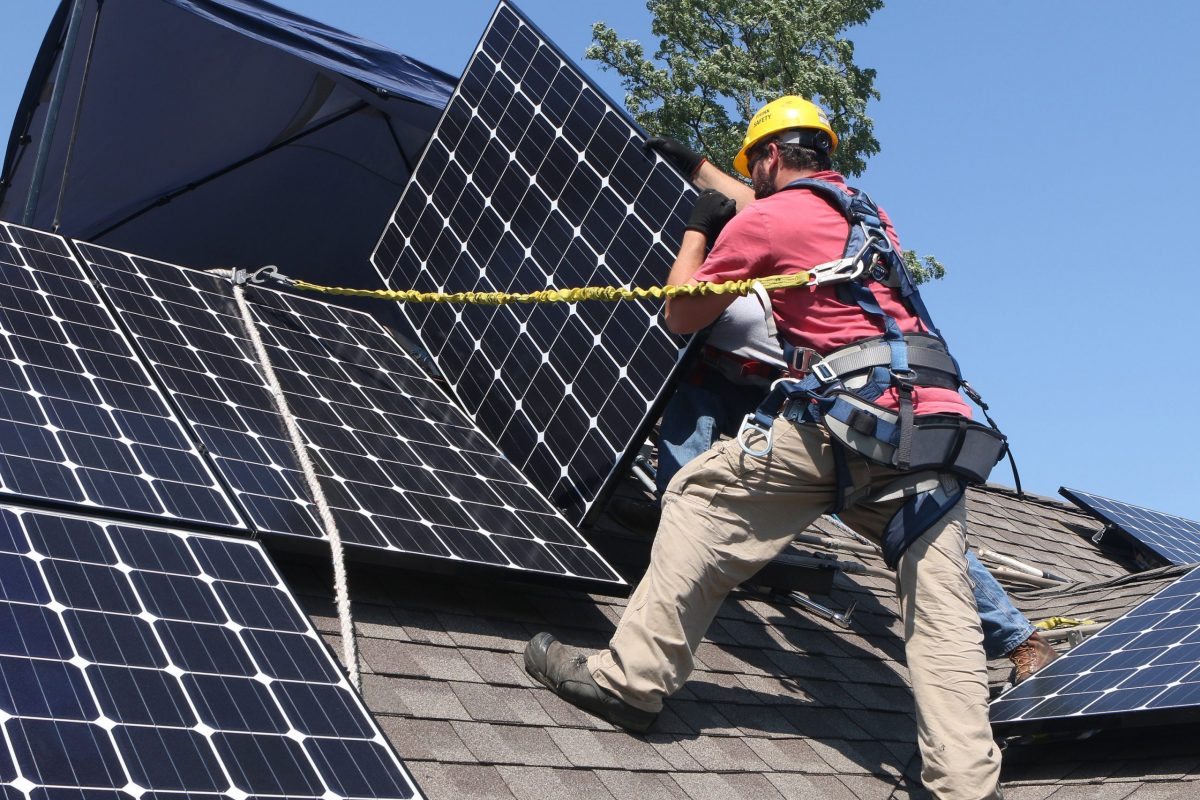Optimize your home’s energy efficiency by integrating a solar energy management system today. Prioritize monitoring energy production and consumption to maximize savings; this system efficiently tracks and balances your home’s power use. Install an intuitive smart meter that adapts to real-time energy demands, minimizing waste. Leverage battery storage options to store excess solar power generated during peak hours for use in the evening, reducing dependency on the grid and lowering your energy bills. Educate yourself on these systems to debunk common myths, such as that they are overly complex or only beneficial in sunny regions. These systems are accessible and profitable wherever you reside. Harness the full potential of solar energy for substantial financial savings and a positive environmental impact.
Understanding Solar Energy Management
Components of Solar Energy Management Systems
Solar energy management systems are a fantastic way for homeowners to harness the power of the sun while cutting down on energy bills and reducing carbon footprints. At the heart of these systems are solar panels, which capture sunlight and convert it into electricity. These panels are both efficient and durable, offering a reliable source of clean energy.
Next, we have inverters, which play a crucial role by converting the direct current (DC) generated by the solar panels into alternating current (AC), the form of electricity used by most home appliances. Inverters ensure that the clean energy from your solar setup is usable in your everyday life.
Energy storage systems, such as batteries, are another vital component. They store any excess energy produced for use during cloudy days or at night, ensuring a constant supply of electricity and enhancing your home’s energy independence.
Finally, monitoring software provides real-time data on system performance, helping you optimize energy use and identify potential issues early. This user-friendly software often comes with dedicated apps, allowing you to track energy production and consumption right from your smartphone, making managing your solar energy system both simple and efficient.
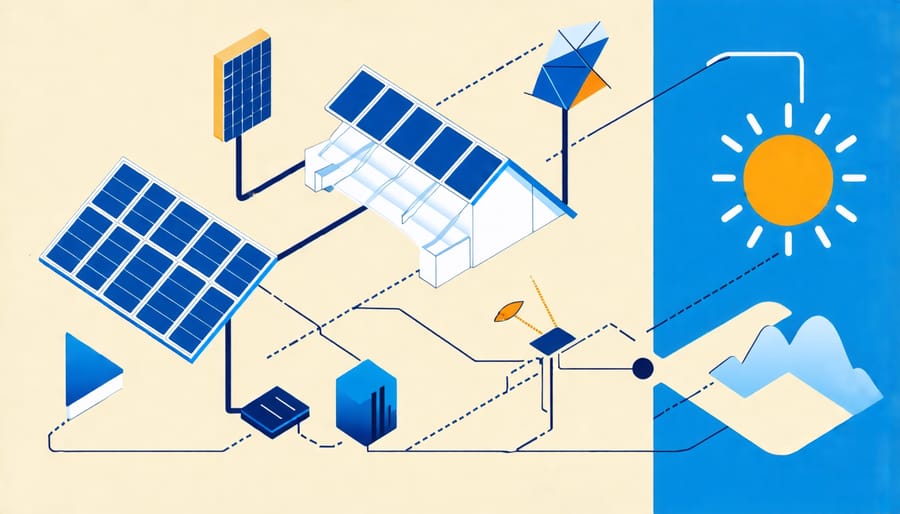
How These Systems Work
Solar energy management systems are transforming how homeowners harness the sun’s power, making energy consumption smarter and more efficient. These systems typically consist of solar panels, an inverter, a battery storage unit, and a smart management interface. Solar panels capture sunlight and convert it into direct current (DC) electricity. The inverter then transforms this DC electricity into alternating current (AC), which is used to power your home. The battery storage unit plays a crucial role in storing excess energy produced during peak sunlight hours, allowing you to use this stored power when the sun isn’t shining, like during the night or on cloudy days.
A smart management interface monitors energy production and usage patterns in real time, adjusting the flow of energy to maximize efficiency and savings. This ensures you use solar energy when it’s available and draw less from the grid, reducing your overall energy costs and carbon footprint. These systems are designed to be user-friendly, providing homeowners with options to control appliances, monitor energy use, and even sell excess energy back to the grid, making them a beneficial investment not just for the environment but also for your wallet.
Key Benefits of Solar Energy Management Systems
Financial Savings and Incentives
Installing a solar energy management system offers significant financial benefits by reducing your monthly energy bills and tapping into substantial government incentives. When you switch to solar, you’re generating your own clean energy, which means buying less from utility companies. This decrease in energy consumption can lead to notable savings over time, sometimes even eliminating your electricity bill in certain conditions. Moreover, many regions offer attractive financial incentives to encourage the adoption of solar technology. These include federal tax credits, state rebates, and local incentives like net metering, which allow you to sell excess energy back to the grid for credits on future bills. Despite common myths suggesting otherwise, costs associated with solar installation have decreased over the years, making it more accessible than ever. The combination of falling installation costs, savings on energy bills, and available incentives make solar energy systems a wise financial investment. Embracing solar energy not only benefits your pocket but also contributes to a cleaner, sustainable environment, aligning perfectly with the values of environmentally-conscious homeowners.
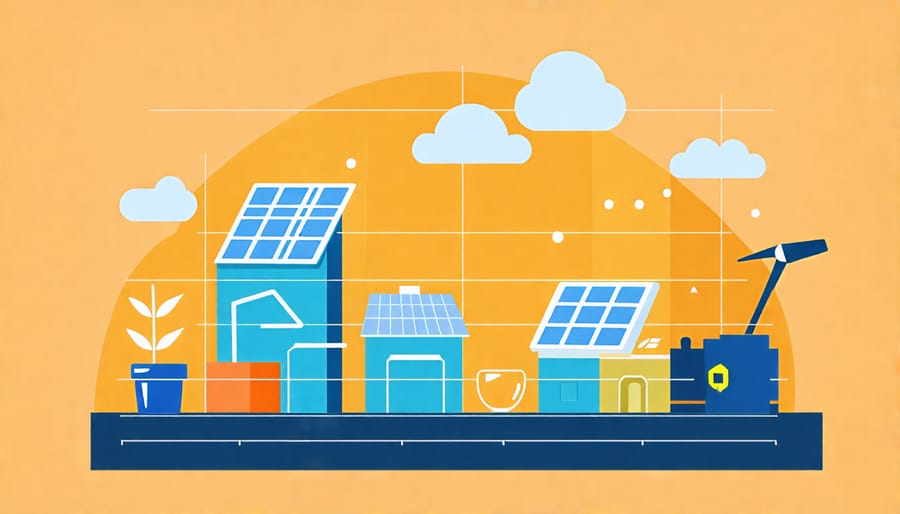
Environmental Benefits
Adopting a solar energy management system offers significant environmental benefits, making it an attractive choice for environmentally-conscious homeowners. One of the most compelling advantages is the reduction in carbon footprint. By harnessing the sun’s energy instead of relying on fossil fuels, you can decrease your household’s greenhouse gas emissions. This shift not only contributes to cleaner air but also plays a crucial role in combating climate change.
Additionally, solar energy is a renewable resource, meaning it’s abundant and sustainable. Unlike finite resources such as coal and natural gas, solar power is limitless, ensuring a long-term solution to energy needs without depleting the Earth’s natural reserves. By using solar energy, you also reduce the need for non-renewable resources, which can help conserve ecosystems and biodiversity that might otherwise be threatened by mining and extraction activities.
Moreover, solar energy systems operate quietly and have low maintenance requirements, minimizing environmental disruption. Embracing solar power isn’t just an investment in your home and wallet but also a positive step toward a sustainable future, aligning personal financial goals with overarching environmental responsibilities.
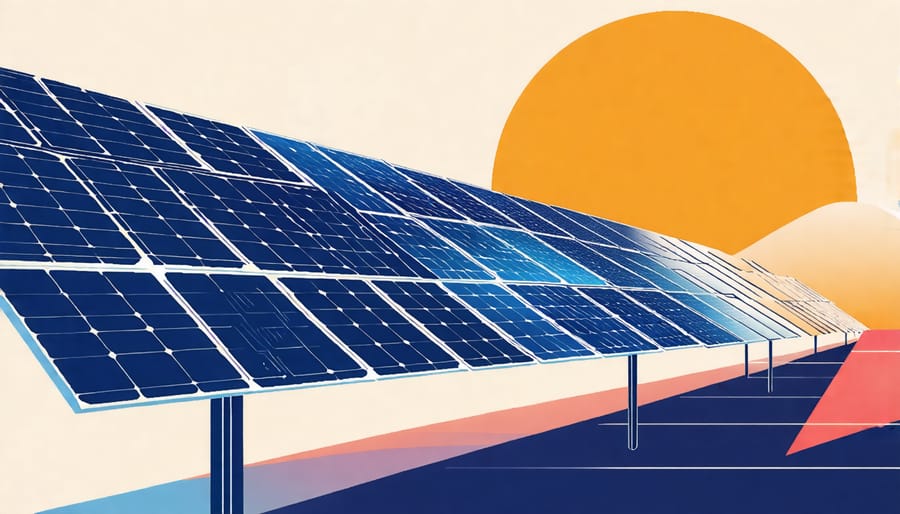
Myths and Misconceptions About Solar Energy
Myth: Solar is Too Expensive
In the past, many homeowners believed that solar energy was a luxury only a few could afford. However, times have changed, and so have the prices. Over the last decade, solar costs have dropped significantly, making it a more accessible option for everyone. Advances in technology and increased production have driven down the costs of solar panels. Additionally, various government incentives and tax credits have made the initial investment in solar energy much more affordable.
Solar energy management systems allow homeowners to optimize energy use, reducing electricity bills while boosting efficiency. By harnessing the sun’s free and abundant power, you can significantly lower your energy costs, leading to substantial savings over time. Moreover, financing options have expanded, providing opportunities for more people to transition to solar without the burden of hefty upfront costs.
Incorporating solar energy into your home isn’t just a step toward sustainability; it’s a smart financial decision. With the current affordability, now is the perfect time to embrace solar energy and benefit both your wallet and the environment.
Myth: Ineffective in Cloudy Regions
Contrary to popular belief, solar energy systems are quite effective even in cloudier regions. While it’s true that sunnier locations produce more solar energy, modern solar panels are designed to be efficient even with less direct sunlight. In fact, countries like Germany, which experience many cloudy days, are leaders in solar energy adoption. This is because solar panels can still harness diffuse sunlight on overcast days to generate electricity. Furthermore, advancements in solar technology have enhanced the ability to capture and convert this light, meaning homeowners in cloudier areas can still benefit from significant energy savings. Utilizing a solar energy management system, you can monitor and optimize your solar usage, ensuring you’re getting the most out of your system. This not only helps trim down your utility bills but also contributes positively to reducing your environmental impact. Embracing solar power, even in cloudier climates, is indeed a powerful step towards sustainable living.
Practical Steps to Implement Solar Energy Management Systems
Assess Your Energy Needs
To begin your journey toward solar energy, it’s crucial to assess your energy needs accurately. Start by reviewing your utility bills over the past year to understand your average energy consumption. Pay attention to seasonal variations, as heating or cooling can cause spikes. Also, consider any lifestyle changes that might affect your future energy use, such as working from home frequently or planning for an electric vehicle. It might be helpful to conduct a simple home energy audit to identify areas where you can improve efficiency, resulting in potentially lower energy consumption. By having a clear picture of your energy needs, you will be better equipped to choose a solar energy management system that matches your consumption patterns and maximizes the financial and environmental benefits.
Choosing the Right System
To select the ideal solar energy management system for your home, start by assessing your energy consumption patterns. Consider the size of your household, peak energy usage times, and any future growth plans. Look for a system that not only meets your current needs but can also adapt as your requirements evolve. Prioritize systems with user-friendly interfaces that allow you to monitor performance and savings easily. Don’t be swayed by common myths like the notion that all systems are overly complicated or expensive. Many contemporary options are designed to simplify energy management and enhance savings, contributing positively to the environment. Explore systems offering smart integration capabilities with existing home devices, ensuring seamless and efficient operation, which ultimately leads to significant reductions in your energy bills.
Conclusion
In conclusion, exploring solar energy management systems can be a rewarding decision for homeowners pursuing a sustainable lifestyle. By embracing such technologies, you are not only making a positive environmental impact but also reaping significant financial benefits. These systems help monitor and optimize your energy use, potentially leading to reduced electricity bills. Moreover, installing solar panels can further enhance energy efficiency, with a seamless integration that maximizes the use of natural resources.
It’s important to remember that these systems are designed to be user-friendly, making it easier for anyone to manage their energy consumption wisely. Besides the economic advantages, a solar energy setup contributes to a greener planet, lowering your carbon footprint and supporting broader environmental conservation efforts.
Debunking common myths, solar energy management isn’t a daunting task; it’s an accessible option that aligns with the growing movement toward eco-friendly living. We encourage you to consider these systems as a viable complement to your home, creating an opportunity for both personal savings and environmental stewardship. With the ongoing advancements in solar technology, there’s no better time than now to embrace this clean energy solution and contribute to a sustainable future.

